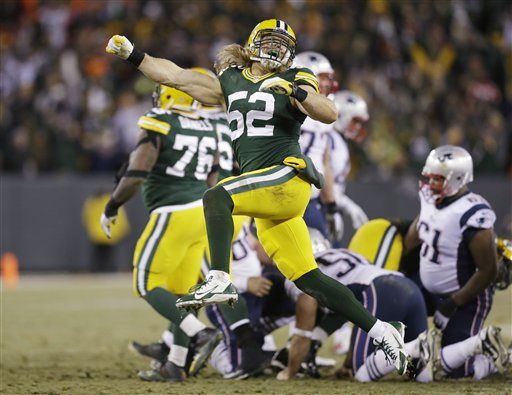Football, as the first Sunday in February again proves, brings Americans together like nothing else. But for several years, the journalists who profit off the game have strangely tried to tear the goalposts down—and not in celebration of the sport.
This season, saturation coverage of Ray Rice’s assault on his fiancée in an Atlantic City elevator created the widespread impression of a spousal-battery epidemic among athletes. But as Benjamin Morris of FiveThirtyEight.com discovered, the arrest rate for domestic violence among NFL players stands at a little more than half the national average.
In seasons past, media antagonists reported urban myths that NFL players died young or committed suicide at elevated rates as fact to discredit America’s Game. But the most comprehensive study of NFL players ever conducted shows that NFL players actually outlive their peers and that comparable men in society take their own lives at more than double the clip of NFL veterans.
The National Institute for Occupational Safety and Health, in a 2012 study of the nearly 3,500 pension-vested players who competed in the league between 1959 and 1988, expected a death rate of 18 percent based on prevailing mortality figures. Instead, they found a 10 percent death rate. Players enjoyed dramatically better health outcomes vis-à-vis their non-pro peers with regard to heart disease, cancer, respiratory illness, diabetes, and in ten of the remaining thirteen categories examined. Football does a body good.
The study also strongly suggests that the media wildly exaggerates threats posed to the brain as a result of the game. The federal government’s scientists expected to find 10 direct deaths from neurodegenerative diseases based on prevailing rates. They found 12—out of nearly 3,500 men. Surely the drinking in the stands imperils brains more than the play on the field.
One year a Fourth Estate feeding frenzy fixates on concussions; the next, on football players in the crime blotter. We don’t know what pigskin story ESPN’s “Outside the Lines” will obsess over next season. We just know it will be unflattering—and probably untrue.
Why do Americans play, watch, and cheer when journalists constantly tell us we should feel guilty for doing so?
Football fields teach the basic life lesson that one must get up after getting knocked down, reward controlled aggression over reflexive passivity, impart in young people that others depend on their effort and that effort often goes unheralded, condition competitors to endure short-term pain for long-term gain, and constantly remind us to never, ever quit. The game is motivational, aspirational, educational, and, of course, perspirational—to coin a word—and Americans love it for these reasons. Football, in which players find themselves in the mud only to wipe themselves off and fight on, plays as a metaphor for life.
Football fields serve as the place where notions of racial superiority go to die and where sheltered kids first encounter children of other backgrounds. African Americans were present at the creation of the NFL, with Fritz Pollard leading his team to a championship in the inaugural season and coaching his team in the second. A First American, Jim Thorpe, famously served as the NFL’s first commissioner. The game favors talent, hard work, toughness—not a player’s race, religion, or class.
Football fields grow boys into men. Fatherless boys looking for discipline and an authority figure can find them on a football field. Boys dubbed hyperactive by teachers can find a cure not in a pill bottle but on a football field. Boys, twenty percent of whom now classify as obese, can turn lard into lean and the disadvantages of size into a strength on a football field. America’s epidemic of under-fathered, over-medicated, obese youngsters receives an antidote on the gridiron.
Footballs fields, from post-Katrina New Orleans to post-Mayflower truck Baltimore, can bring communities together and tear them apart. It’s how Nowheresville, Texas, spends Friday nights, what turns sleepy college towns into bustling metropolises on Saturday afternoons, and what transfixes the entire country on Sundays. On a Tuesday in January, every channel played the State of the Union address but nobody watched. On a Sunday in February, one channel plays the Super Bowl and everybody watches.
Americans stand divided over the cable news networks we tune-in to, the churches we attend (or don’t), the candidates we vote for, and even the languages that we speak. Americans stand united behind football.
What’s wrong with a great people coming together for a great game?
Daniel J. Flynn, the editor of Breitbart Sports, authored The War on Football: Saving America’s Game (Regnery).

COMMENTS
Please let us know if you're having issues with commenting.